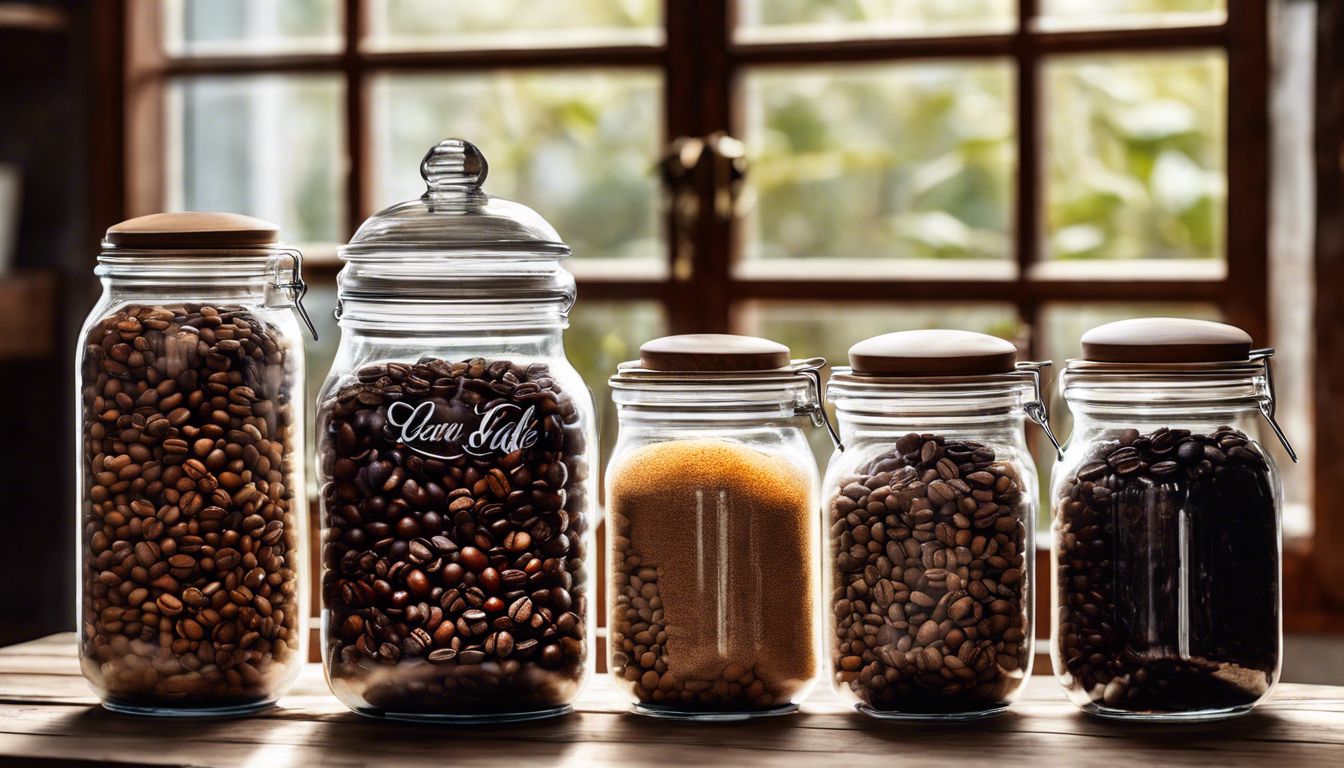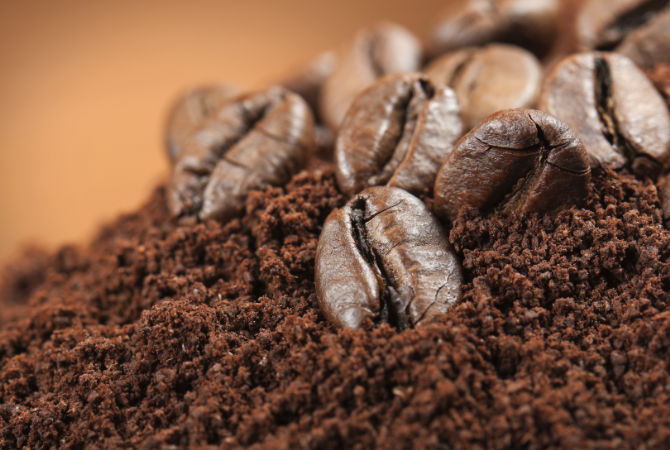Blog
Spanish Latte Vs Vietnamese Coffee: A Flavourful Comparison
Have you ever wondered whether the creamy richness of a Spanish Latte or the bold intensity of Vietnamese Coffee suits your taste? These two coffee varieties have gained international recognition, each offering a unique blend of flavour and tradition.
Both of these drinks can contain condensed milk but there are some significant differences. Discover the distinctive qualities of these intriguing coffee choices.
A Spanish Latte, originating from Spain, features Arabica beans, contributing to its smooth and delicate flavour. On the other hand, Vietnamese Coffee, with its roots in Vietnam, uses Robusta beans, known for their strong, robust taste.
This comparison explores not only their flavour profiles but also the cultural importance and preparation methods of each beverage.
Key Ingredients and Brewing Techniques

Spanish latte and Vietnamese coffee use different beans and milks. Each drink has its own brewing method, giving them unique tastes.
Spanish Latte: Espresso, Scalded Milk
A Spanish latte combines rich espresso with scalded milk. This drink uses two shots of espresso and 100 grams of milk. Baristas often add 1.5 tablespoons of sweetened condensed milk for extra sweetness.
You can prepare it at home with a Moka pot or espresso machine.
Spanish lattes use Arabica coffee beans for a smooth taste. The scalded milk gives the drink a distinct flavour and texture. It’s creamier than a regular latte but not as sweet as some other coffee drinks.
You’ll find this flavourful beverage in many coffee shops across Spain and beyond.
Vietnamese Coffee: Robusta Beans, Condensed Milk

Vietnamese coffee packs a punch with its strong Robusta beans. These beans have more caffeine than Arabica, giving you a real wake-up call. The drink mixes bold coffee with sweet condensed milk, creating a unique taste.
You’ll find it’s often served over ice, perfect for hot days.
To make it, you’ll use a special tool called a phin filter. This metal filter sits on top of your cup and slowly drips the coffee. Add 1-2 spoons of condensed milk, then stir and enjoy.
The result? A sweet, strong, and creamy drink that’s loved across Vietnam and beyond.
Comparison of Brewing Methods
Spanish latte and Vietnamese coffee use different brewing methods. Each approach creates distinct flavours and textures.
| Brewing Method | Spanish Latte | Vietnamese Coffee |
|---|---|---|
| Main Equipment | Espresso machine | Phin filter or French press |
| Coffee Grind | Fine | Medium-coarse |
| Brewing Time | 25-30 seconds | 4-5 minutes |
| Milk Addition | Scalded milk added after brewing | Condensed milk added before or after brewing |
| Serving Style | Hot or iced | Often served over ice |
The Phin method for Vietnamese coffee requires attention to detail. Fill the Phin chamber with coffee grounds. Allow it to bloom for 30 seconds. Then pour hot water slowly. This process creates a strong, rich brew.
For Spanish latte, an espresso machine extracts intense flavour in seconds. Scalded milk adds smoothness. Both methods offer unique tastes through straightforward steps.
Flavour and Texture Differences
Spanish latte and Vietnamese coffee offer distinct taste experiences. Spanish latte brings a creamy, mild flavour, while Vietnamese coffee packs a strong, sweet punch.
Spanish Latte: Creamy, Mild Flavour
Spanish lattes offer a creamy, mild taste that coffee lovers enjoy. This drink combines espresso with scalded milk, heated to 170-181°F. The use of Arabica beans gives it a smoother, sweeter flavour than other coffees.
You’ll find the Spanish latte less intense than a regular latte, suitable for those who prefer a gentler coffee experience.
The sweetness in a Spanish latte comes from both the beans and the milk. Scalding the milk brings out its natural sugars, contributing to the drink’s overall sweetness. This process also creates a silky texture that feels pleasant on your tongue.
Many cafes now serve this drink, as it’s become popular beyond Spain’s borders.
Vietnamese Coffee: Strong, Sweet Flavour
Vietnamese coffee packs a punch. It uses Robusta beans, known for their strong taste and high caffeine. The slow brewing in a Phin filter creates a rich, bold drink. You’ll notice a subtle sweetness from the condensed milk.
This mix of strong and sweet makes it unique.
The flavour hits you right away. It’s not like your usual cup of joe. The Robusta beans give it a deep, earthy taste. Add the sweet condensed milk, and you get a perfect balance. It’s a treat for your taste buds – strong yet smooth.
Impact of Milk Type on Taste
Milk type plays a big role in how Spanish lattes and Vietnamese coffee taste. Spanish lattes use scalded milk, giving a sweet, creamy flavour. Vietnamese coffee opts for sweetened condensed milk, creating a rich, sugary taste.
You can swap in plant based milks like almond or oat for both drinks. This change affects the texture and flavour. Dairy-free options often make the drinks less creamy but add unique notes.
Health and Nutritional Differences
Spanish lattes and Vietnamese coffee differ in their health impacts. Spanish lattes pack more calories due to milk, while Vietnamese coffee has more caffeine.
Caffeine Content
Caffeine levels vary between Spanish Latte and Vietnamese Coffee. Your selection affects your daily caffeine consumption.
| Coffee Type | Caffeine Content | Notes |
|---|---|---|
| Spanish Latte | Lower | Uses Arabica beans |
| Vietnamese Coffee | Higher | Uses Robusta beans, nearly 2x caffeine of Arabica |
Robusta beans contain more caffeine
Calorie Comparison
Spanish lattes pack more calories than traditional lattes or Vietnamese coffee. Here’s a breakdown:
| Drink | Calories (per serving) |
|---|---|
| Spanish Latte (12 oz) | 250-300 |
| Traditional Latte (12 oz) | 180-200 |
| Vietnamese Black Coffee (4 oz) | 2 |
Spanish lattes have more calories due to added sugar and milk. Vietnamese coffee, when served black, has very few calories. Adding condensed milk to Vietnamese coffee will increase its calorie count. Your choice impacts your daily calorie intake.
Sugar and Additives in Each Drink
Spanish lattes and Vietnamese coffees have different sugar contents and additives. Here’s a comparison of the two drinks:
Spanish Latte:
- Contains sweetened condensed milk, increasing the sugar content
- Generally has 20-30 grams of sugar in each serving
- Might include vanilla syrup for extra sweetness
- Some variations use regular milk and sugar instead
Vietnamese Coffee:
- Also contains sweetened condensed milk, contributing to its high sugar content
- Usually has 25-35 grams of sugar in each serving
- Occasionally includes chicory root for a distinct flavour
- Iced versions might have additional sugar syrup
Health Aspects:
- Both drinks are calorie-dense due to their sugar content
- Spain’s NAOS Strategy aims to lower sugar in food and drink products
- Health professionals advise limiting consumption of these sweet coffee drinks
Personalisation Choices:
- You can request less condensed milk to lower the sugar content
- Some coffee shops offer sugar-free syrup options
- Unsweetened plant-based milks provide a lower-sugar option
Cultural Impact and Global Popularity

Spanish lattes and Vietnamese coffee have left their mark on global drink culture. You’ll find these brews in cafes from London to Tokyo, each with its own local twist.
Spanish Latte in European Coffee Culture
Spanish latte, also known as café con leche, has deep roots in European coffee culture. It emerged in Barcelona, Spain in the early 1900s. As espresso machines gained popularity across Europe, this drink spread quickly.
The mix of strong espresso and warm milk appealed to many coffee lovers. Its creamy texture and balanced flavour made it a hit in cafes and homes alike. Today, you’ll find Spanish lattes in coffee shops all over Europe.
Vietnamese Coffee as a Cultural Icon in Vietnam
Vietnamese coffee is a big deal in Vietnam. It’s more than just a drink – it’s part of daily life. People love to sip it at street cafes or make it at home. The French brought coffee to Vietnam in the 1800s.
Now, Vietnam makes tons of coffee. It’s the world’s second-largest producer.
Cà phê sua dá is a famous Vietnamese iced coffee. It’s sweet and strong. People make it with dark roast coffee and condensed milk. You’ll see locals drinking it everywhere. It’s a cool treat on hot days.
Tourists often try it too. It shows how coffee is key to Vietnam’s culture.
Global Adaptations of Both Drinks
Spanish latte and Vietnamese coffee have spread beyond their home countries. These drinks now appear in cafes worldwide, with local twists.
- UK adaptations:
- Spanish latte often uses oat milk for a vegan option
- Vietnamese coffee is served as an iced latte in summer
- US variations:
- Pumpkin spice Spanish latte in autumn
- Cold brew Vietnamese coffee for hot days
- Asian fusion:
- Matcha Spanish latte in Japan
- Bubble tea-inspired Vietnamese coffee in Taiwan
- Middle Eastern takes:
- Cardamom-infused Spanish latte in Dubai
- Date syrup Vietnamese coffee in Saudi Arabia
- Australian twists:
- Flat white Spanish latte hybrid
- Long black Vietnamese coffee for strong taste fans
- Canadian versions:
- Maple syrup Spanish latte
- Tim Hortons-style Vietnamese coffee doughnut pairing
- South American fusions:
- Dulce de leche Spanish latte in Argentina
- Amazonian fruit-infused Vietnamese coffee in Brazil
Conclusion
Spanish latte and Vietnamese coffee offer unique tastes. You’ll find rich flavours in both drinks. Try them to expand your coffee horizons. Each has its own brewing method and cultural roots.
You can make these at home with the right tools. Enjoy exploring these delicious coffee options!
Frequently Asked Questions
What Are the Key Differences Between a Spanish Latte and Vietnamese Coffee in Terms of Flavour?
A Spanish Latte offers a smooth, creamy taste due to the use of Arabica beans and scalded milk, resulting in a milder, sweeter flavour. In contrast, Vietnamese Coffee has a bold, intense flavour due to the Robusta beans and sweetened condensed milk, giving it a strong, rich, and slightly bitter taste.
How Does the Brewing Method of a Phin Filter Compare to Using an Espresso Machine?
The Phin filter, used for Vietnamese Coffee, is a slow-drip brewing method that takes 4-5 minutes to create a strong, rich brew. In comparison, the espresso machine used for Spanish Latte extracts coffee within 25-30 seconds, resulting in a smoother, faster brew. Each method brings out unique flavours in the coffee.
Why Do Spanish Lattes Use Arabica Beans While Vietnamese Coffee Uses Robusta?
Arabica beans are preferred for Spanish Lattes due to their mild, sweet flavour, which complements the scalded milk for a balanced taste. Vietnamese Coffee, on the other hand, uses Robusta beans for their higher caffeine content and bold, earthy flavour, which pairs well with the sweetness of condensed milk.
How Does the Use of Condensed Milk in Both Drinks Affect Their Sweetness?
In both Spanish Latte and Vietnamese Coffee, the use of sweetened condensed milk adds a layer of sweetness. However, in Vietnamese Coffee, the sweetness is more pronounced due to the higher sugar content and the boldness of Robusta beans. In Spanish Latte, the sweetness is more subtle, balanced by the use of Arabica beans and scalded milk.
Can Both Spanish Latte and Vietnamese Coffee Be Made with Plant-Based Milk?
Yes, both drinks can be made with plant-based milk alternatives, such as almond or oat milk. In Spanish Latte, this substitution may result in a less creamy texture, but still offers a smooth taste. For Vietnamese Coffee, plant-based milks will alter the traditional flavour, but can provide a healthier, dairy-free option.
Is Vietnamese Coffee Only Served Cold?
No, while Vietnamese Coffee is often enjoyed cold, especially during hot weather, it can also be served hot. The brewing process using a Phin filter works for both hot and iced versions, allowing for versatility depending on personal preference.
Which Coffee Drink Is Healthier: Spanish Latte or Vietnamese Coffee?
The healthiness depends on personal dietary goals. Spanish Latte typically has more calories due to the use of scalded milk and sometimes sweetened condensed milk. Vietnamese Coffee has higher caffeine content because of the Robusta beans, but can be lower in calories if served black without the condensed milk.



